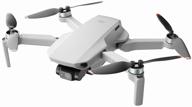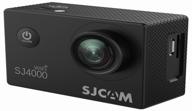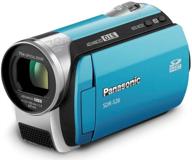
Review on 🚁 Potensic Elfin Drones with Camera: 2K FPV Foldable Drone for Kids & Adults with Advanced Features - Gravity Sensor, Trajectory Flight, Gesture Control, Headless Mode, Optical Flow Positioning | Includes 2 Batteries & Carry Case by James Hounds

Sturdy little drone that's fun to fly
We are not very experienced drone users. Last summer my son got a Potensic D18 Foldable Drone (1080P FPV WiFi Camera, RC Quadcopter Live Video, 20min 2 Batteries, Optical Flow, Altitude Hold) and it was a great drone for beginners. From this he learned the basics of ready-to-fly. Since we don't have much past experience, I decided to write this Elfin review as a comparison to the D18. The Elfin shares the same basic specs as the D18, but those are probably just all drones. Each connects to a smartphone to record videos (although they use different apps). Both feature headless mode, meaning the controller will control the drone in the same way regardless of the drone's orientation in relation to the controller. We found some cool features that the Elfin has that the D18 doesn't have. The gravity sensor allows you to fly with a single movement of your smartphone. When tilting, the drone flies accordingly (forward/backward, left/right). Elfin can also use hand gestures to take photos and videos. We haven't played with it yet, but I like the idea. The two models fly differently. Elfin doesn't automatically freeze like D18 unless you have hover mode enabled. It will fall in the air a little when not flying. This design may be intentional, as there may be benefits to not freezing (but that's outside of our experience). The Elfin's controls are much more responsive, so students may find the flying (in my son's words) to be "snappy". The drone rotates slower than the D18, but this can be a big advantage when capturing video as it records smoothly. The Elfin has a longer flight range from the controller and can also fly faster, but we couldn't test this because we have a lot of trees in our garden and we haven't taken it to the open field yet. The camera is better on Elfin, but the angle/range is different than the D18. When we first started using the drone, we noticed that the camera was tilted downwards, so you need some height to capture video or photos and only what's underneath. On closer inspection, it looks like the camera can be adjusted a bit. The D18, on the other hand, has a full 90-degree camera setup, allowing you to take photos or record right in front of the drone in flight. The protective covers on the Elfin were easy to install. We may not use them for long but my son wants to make sure he can handle the flight before taking them off. The guards themselves are much larger than the guards on D18. The sentinels on the D18 appear to only guard the drone from the side (so frontal impacts can be an issue), but the sentinels on the Elfin cover about 45 degrees. When I asked my son which of the two he preferred, he shrugged and said he couldn't answer that question. He likes them both. One is neither better nor worse than the other; they are just different. At some point in the future it will be interesting to take them with you and fly them at the same time to get a real idea of how they work the same or different. Due to the ease of flying, we recommend the D18 for beginners. My son finds flying the Elfin more fun, but it can be a little more frustrating for absolute beginners.
- GOLS certified
- Sad packaging












